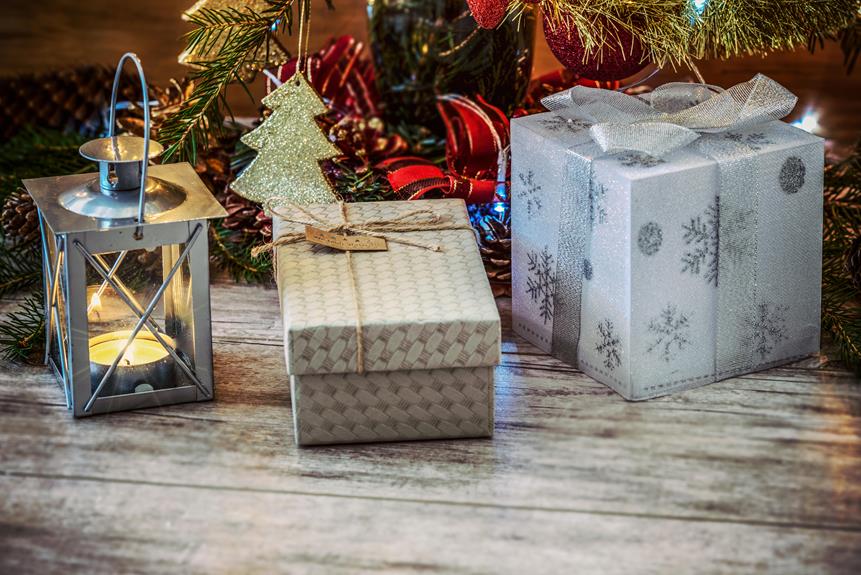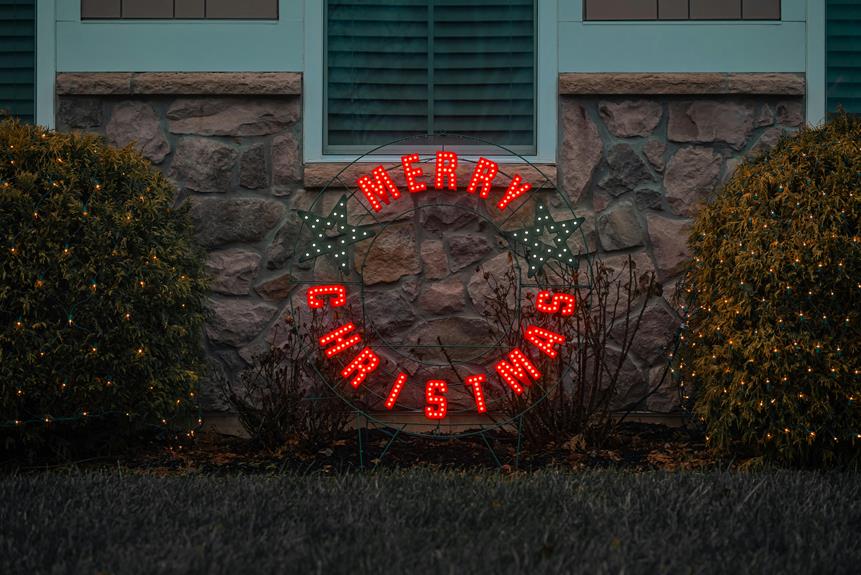You’ve been exchanging gifts during the Christmas season for as long as you can remember, but have you ever wondered where this tradition originated and how it has evolved over time? The ancient pagans started it all, exchanging gifts to promote good luck, fertility, and friendship during harsh winter months. Early Christians adopted this tradition to honor the Three Wise Men, and it continued to evolve through the Middle Ages and Victorian era. Industrialization and mass production made gifts more accessible, while the 20th century saw a rise in advertising and consumerism. Today, the digital age has transformed gift giving, offering endless possibilities and convenience. As you unwrap the layers of this tradition, you’ll discover more surprising twists and turns.
Key Takeaways
- Ancient pagan festivals involved exchanging gifts to promote good luck, fertility, and friendship during harsh winter months.
- Early Christians adopted gift giving to honor the Three Wise Men who brought gifts to the baby Jesus, reflecting Christian charity and kindness.
- The Victorian era transformed Christmas gift-giving with industrialization, urbanization, and mail-order catalogs, making gifts more accessible and affordable.
- Mass production in the Industrial Revolution led to standardized, affordable gifts, shifting from unique, handmade items to commercialized goods.
- The 20th century saw significant shifts in advertising, marketing, and consumerism, driving a culture of excess and materialism in holiday gift giving.
Ancient Pagan Roots of Gift Giving
You can trace the origins of gift giving at Christmas back to ancient pagan festivals, where people would exchange presents as a way to promote good luck, fertility, and friendship during the harsh winter months.
These festivals, celebrated around the Winter Solstice, marked the shortest day of the year and the beginning of the sun’s journey back towards the equator.
The Celts, in particular, had a rich tradition of gift giving during this time. They’d exchange gifts like fruits, nuts, and handmade crafts as a symbol of goodwill and friendship.
The Winter Solstice was a significant event for the Celts, as it marked the return of the sun and the coming of longer days. They’d light bonfires and decorate their homes with evergreen branches, holly, and mistletoe to celebrate the occasion.
As you explore further into the history of gift giving, you’ll find that these ancient pagan traditions have had a lasting impact on the way we celebrate Christmas today.
Early Christian Traditions and Gifts
As Christianity spread throughout Europe, the tradition of gift giving during the winter months evolved, with early Christians adopting the practice as a way to honor the Three Wise Men who brought gifts of gold, frankincense, and myrrh to the baby Jesus.
You’ll notice that this tradition was rooted in Christian charity, as the early Christians sought to emulate the generosity and kindness of the Magi. In doing so, they imbued gift giving with spiritual significance, using it as an opportunity to demonstrate their faith and spread joy to those around them.
As you explore the history of gift giving during this time, you’ll find that early Christians often gave gifts to the poor, the sick, and the marginalized.
This practice not only reflected the values of Christian charity but also served as a powerful symbol of the Christian faith. By giving gifts, early Christians were able to demonstrate their commitment to their faith and to show compassion to those in need.
This emphasis on spiritual significance and Christian charity continues to shape the way we approach gift giving during the holiday season today.
Medieval Gift Exchange Customs
During the Middle Ages, gift exchange customs evolved into a festive tradition where lords and vassals exchanged gifts as a symbol of loyalty, friendship, and social status.
You’ll notice that these exchanges were deeply rooted in Medieval etiquette, where the value and type of gift reflected the giver’s social standing. For instance, a noble patron would bestow lavish gifts upon their vassals to reinforce their position of power. In return, vassals would offer gifts that acknowledged their lord’s authority.
As you explore further into the customs of this period, you’ll find that gift-giving was often tied to specific occasions, such as New Year’s Day or Twelfth Night.
These celebrations brought people together, fostering a sense of community and reciprocity. Gift exchange customs also played a significant role in strengthening bonds between lords and vassals, as well as between friends and family.
In this sense, gift-giving became an essential aspect of Medieval social dynamics, reinforcing relationships and demonstrating one’s position within the social hierarchy.
Victorian Era and Commercialization
In the Victorian era, Christmas gift-giving underwent a profound transformation, driven by industrialization, urbanization, and the rise of a prosperous middle class.
You witnessed the emergence of new traditions, and gift-giving became a more widespread and commercialized practice. The introduction of mail-order catalogs allowed you to browse and purchase gifts from the comfort of your own home, revolutionizing the way you shopped.
Department stores like Harrods and Macy’s capitalized on this trend, offering an array of festive gifts and decorations that catered to the growing demand.
As you strolled through these iconic stores, you were surrounded by elaborate window displays, enticing advertisements, and enticing promotions.
The concept of Christmas shopping became a popular pastime, and you found yourself swept up in the excitement. Gift-giving evolved from a simple, homemade affair to a grand, extravagant gesture.
You began to associate Christmas with luxury, opulence, and material possessions. The allure of consumerism had taken hold, and the modern concept of Christmas gift-giving was born.
Industrial Revolution and Mass Production
With the Industrial Revolution in full swing, you’re witnessing the dawn of mass production, which is about to transform the way gifts are manufactured, marketed, and distributed. This means that gifts can now be produced on a large scale, making them more accessible and affordable for the masses.
You’re seeing the rise of factory labor, where workers are employed to work on production lines, churning out gifts at an unprecedented rate.
The introduction of production lines allows for greater efficiency and speed, enabling manufacturers to meet the growing demand for Christmas gifts.
As a result, gifts become more standardized, with identical products rolling off the assembly lines. This standardization also leads to a decrease in production costs, making gifts more affordable for the average person.
The Industrial Revolution marks a significant shift in the way gifts are produced and consumed.
With mass production, gifts are no longer unique, handmade items, but rather mass-produced goods that can be found on store shelves.
This change has a profound impact on the way people celebrate Christmas, making it more commercialized and widespread.
20th Century Advertising and Marketing
As Christmas gifts become more accessible and affordable, you’re now bombarded with advertisements that capitalize on the holiday spirit, touting the latest must-haves and creating a sense of urgency around gift giving.
The 20th century saw a significant shift in advertising and marketing strategies, particularly in the print ads and department stores.
Department stores like Macy’s and Bloomingdale’s began to dominate the holiday shopping scene, offering a wide range of gifts under one roof. They created elaborate window displays, festive decorations, and enticing promotions to draw in customers.
Print ads became more creative and attention-grabbing, featuring colorful illustrations, catchy slogans, and celebrity endorsements. Advertisers used psychological tactics to tap into consumers’ emotions, making them feel like they needed the latest gadgets and fashion trends.
As a result, new holiday shopping traditions emerged, such as Black Friday sales, doorbuster deals, and extended shopping hours. These strategies have become an integral part of the modern Christmas shopping experience, shaping the way we think about gift giving today.
Post-War Consumerism and Excess
You stepped into a world of unprecedented consumerism in the post-war era, where mass production and credit buying fueled a culture of excess.
The Credit Frenzy had begun, and it seemed like everyone was caught up in the whirlwind. With the rise of credit cards and easy financing, people were no longer limited by their cash reserves. They could buy, buy, buy – and they did.
This Materialism Boom was driven by clever marketing and advertising, which created a sense of FOMO (fear of missing out) and a desire for the latest and greatest.
Gift giving at Christmas became an exercise in one-upmanship, with people competing to give the most extravagant and expensive presents. Department stores and shopping malls sprouted up, catering to the insatiable appetite for goods.
The focus shifted from the true meaning of Christmas to the accumulation of stuff. As a result, Christmas gift giving became a symbol of status, wealth, and success. You were no longer just giving a gift; you were making a statement.
Modern Digital Age of Gift Giving
The internet revolutionized Christmas gift giving, transforming the way people discover, purchase, and exchange presents.
You’re no longer limited to physical stores or mail-order catalogs. With just a few clicks, you can browse and buy gifts from anywhere in the world.
This digital shift has opened up new opportunities for E-gift options, making it easier to send gifts instantly or schedule them in advance.
You can now create personalized experiences for your loved ones, such as:
Customized gifts: Add a personal touch to gifts with monograms, names, or special messages.
Virtual gift wrapping: Choose from various wrapping paper designs and add a gift message to make it extra special.
Digital gift cards: Send gift cards via email or text, allowing recipients to choose their own gifts.
The modern digital age has also made it easier to stay organized and on top of your holiday shopping.
You can set reminders, track orders, and even get gift ideas based on the recipient’s interests and preferences.
With the internet at your fingertips, you can make this Christmas season one to remember.
Frequently Asked Questions
Why Is Gift Wrapping a Significant Part of Christmas Celebrations?
You might wonder, why is gift wrapping such a big deal at Christmas? It’s because wrapping etiquette speaks to the thought and effort you put into the gift, tapping into gift psychology, making the present feel more personal and special to the recipient.
Are There Any Countries That Do Not Exchange Gifts During Christmas?
You’ll find cultural exceptions to gift-giving during Christmas in countries like Japan, where it’s not a traditional practice, and in some African nations, where alternative traditions like charitable acts take center stage.
What Is the Origin of the Tradition of Secret Santa Gifts?
You’re probably wondering where the Secret Santa tradition came from. It’s believed to have started in the 1930s in the US, likely at office parties, where coworkers would draw names to exchange affordable gifts, simplifying the holiday chaos.
How Did Christmas Gifts Become Associated With the Color Red?
You unwrap a crimson-wrapped gift, and suddenly, excitement sparks! That’s because red, a color linked to energy and passion, has become synonymous with Christmas gifts.
Are There Any Alternative Gift-Giving Practices During Christmas?
You’re looking for alternative gift-giving practices this Christmas. Consider switching to eco gifts, reducing waste and promoting sustainability. Alternatively, try experience gifting, where you give memories, like concert tickets or a cooking class, instead of physical presents.
Conclusion
As you reflect on the history of gift giving at Christmas, it’s clear that the tradition has evolved substantially over time.
From ancient pagan roots to modern digital age, gift giving has been shaped by cultural, social, and economic factors.
Remember, ‘it’s the thought that counts,’ not the price tag or commercial pressure.
By understanding the origins and evolution of gift giving, you can refocus on the true spirit of the season and make your gifts more meaningful and personal.


